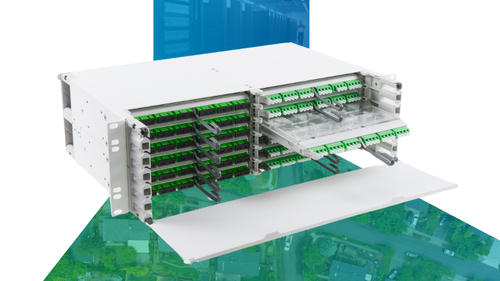
This blog post is part of a series called “CommScope Definitions” in which we will explain common terms in communications network infrastructure.
Wave Division Multiplexing (WDM) is a method of combining or separating multiple wavelengths of light in or out of a single strand of fiber optic with each wavelength of light carrying a different signal. The use of optical filters allows a certain range of wavelengths to pass through while blocking others. CommScope uses thin-film filter technology (TFF) to achieve this optical effect. Thin layers are stacked together, and consecutive reflections on the interfaces between these layers create interference effects that let light pass through for certain wavelengths and reflect others.
Learn More About CommScope’s Fiber Optic Passives for Central Office/Headend
WDM is a cost-effective way to increase the capacity of a network. There are two different types:
Coarse Wavelength Division Multiplexing (CWDM) and Dense Wavelength Division Multiplexing (DWDM).
Coarse Wavelength Division Multiplexing (CWDM is standardized to have 18 different wavelength channels with a spacing of 20 nanometers (nm) starting at 1270 nm and ending at 1610 nm. Most systems use the eight channels in the upper band (from 1470 nm to 1610 nm). The advantage of CWDM systems is that it is always possible to upgrade at a later point in time to limit the installation cost on day one. The wider channel spacing places less stringent requirements on the lasers, which allows the use of less expensive lasers without temperature controllers.
Dense Wavelength Division Multiplexing (DWDM) devices are mostly used in the core networks to extend over very long distances and where more wavelengths are required between sites. The 40 wavelength channels are distributed in the C-band from 1530 nm to 1570 nm. If required, DWDM can be “over-layed” on a CWDM infrastructure to increase capacity. Typically, CWDM and DWDM have lower insertion losses compared to optical splitters. This significantly increases the reach of the network from the central office. Moreover, every customer has an assigned wavelength(s), providing greater security and making eavesdropping difficult if not impossible.
There are a few different ways to utilize WDMs in your network:
A multiplexer (mux) combines multiple wavelength channels on a single fiber, and a demux separates them again at the other end. A mux/demux setup is especially useful to increase the end-to-end capacity of a deployed fiber. The mux is typically located in the central office, and the demux unit is located in either a cabinet or splice closure from which point the fibers go to their destination in a star-shaped topology.
WDM technology is essential for modern passive optical networks (PON), enabling efficient and scalable fiber optic communication systems.
Learn More:
Fiber Optic Passives for Central Office/Headend
Central Office/Headend Products and Solutions for Service Providers










